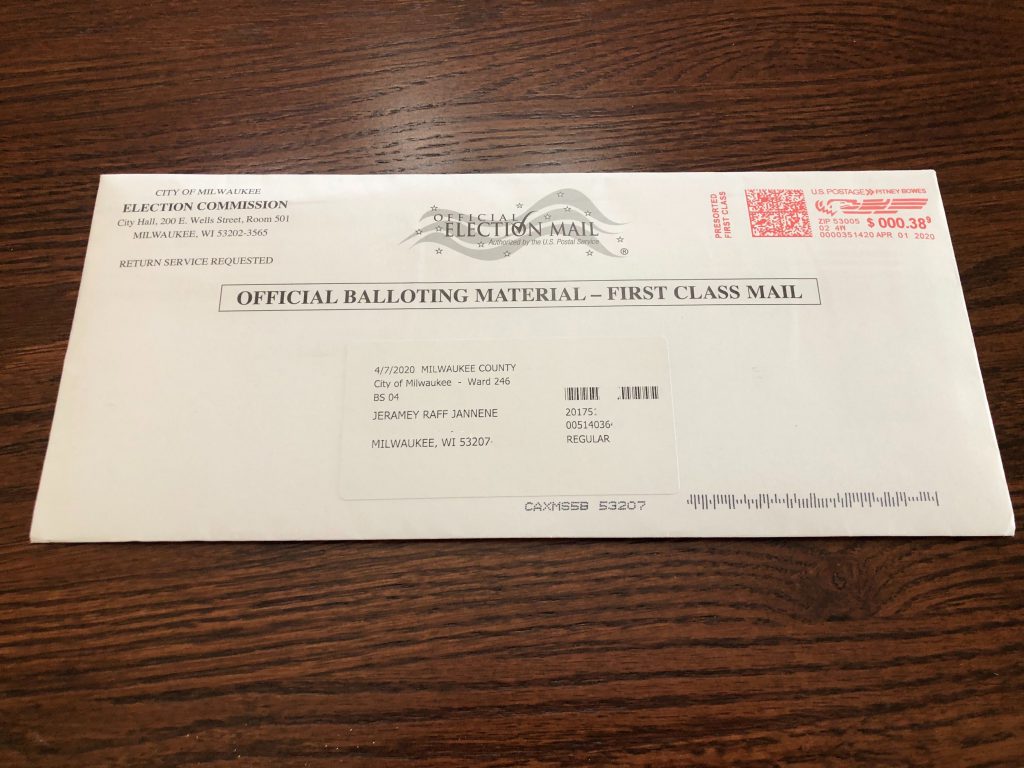Wisconsin’s Missing Absentee Ballots
New Elections Commission data shows huge number of ballots across the state didn’t arrive on time.
Maria Nelson, a 35-year-old Appleton resident, was diagnosed with stage two breast cancer in February 2019. A little more than a year later, on March 31, she requested an absentee ballot to vote in Wisconsin’s spring election.
She thought she was following the rules, believing she had until April 13 to get her ballot in due to a federal district court ruling. Still undergoing treatment, Nelson is immunocompromised so heading to the polls was out of the question over fears of contracting COVID-19.
But the rug was pulled out from under her and the rules were changed. A last-minute U.S. Supreme Court order changed the deadline for returning absentee ballots. A ballot now had to be postmarked by April 7 — Election Day.
Her ballot arrived in the mail on April 8.
“That’s the most frustrating part, you’re playing by the rules and you don’t realize they can change and when they change that means you don’t get to vote,” Nelson says. “You feel angry, you feel frustrated, you feel helpless. For me, having cancer at 34 was such a disruption and such a painful experience that robbed me of many things in my life. Luckily I’m getting better and should be healthy, but this was another thing that cancer had done to me, I couldn’t even go vote.”
Some, like Emily Tseffos, also of Appleton, went to the polls anyway despite the risks. Her ballot arrived on April 9.
In data from the Wisconsin Elections Commission, Nelson and Tseffos are reflected as numbers. Two ballots requested and two ballots sent by the City of Appleton Clerk.
But they are not counted as two ballots returned.
WEC data shows how many Wisconsinites who requested ballots never received them and how many didn’t return the ballots they were sent.
While some people, like Tseffos, donned masks and gloves and went to the polls anyway, others could not. Any other past election would normally have a number of unreturned ballots for a variety of reasons, but past elections didn’t take place during a pandemic.
These graphics show the requests for Wisconsin’s two biggest cities, as well as about half of the state’s counties — all of which had more 50% absentee turnout.
The WEC has said some of the differences may be caused by a delay in data entry by local clerks. But on the flip side, a portion of the returned ballots will be invalidated for a variety of reasons.
Some won’t have a required witness signature — which for a small period of time wasn’t required. Some won’t have a postmark — which was only added as a requirement on the evening before the election by the Supreme Court.
The data on absentee ballots for Wisconsin’s two largest cities shows tens of thousands of unreturned ballots. Madison was able to keep a large portion of its usual polling places open, but Milwaukee opened just five of its usual 180.
Still, hundreds of thousands of people returned absentee ballots or waited in long lines to vote in person.
“Watching and realizing the decisions that were made, the impacts to our more urban communities,” Tseffos says, “it didn’t have much of a cost for people who look like me, in places that look like Appleton. The risk for people living in Milwaukee and Madison [was greater] … the risk people took to exercise the right to vote.”
It’s not fair to point fingers at the local clerks who were charged with processing and sending the ballot requests, says Nelson. The clerks worked to respond to an unprecedented wave of ballot requests during an unprecedented election.
“It would be easy to be mad at the clerks in all of this, I don’t want that to be the focus,” Nelson says. “This is a group of people working extremely hard during a pandemic to support our nation.”
Moving through the rest of 2020, with elections set to be held in Wisconsin in May, August and November, Nelson and Tseffos say they planned to request absentee ballots for the rest of the year.
They both say it needs be as easy as possible to vote by mail.
“Wisconsin is a harbinger for what could happen across the country,” Tseffos says. “With the sustained presence of the pandemic, we need to do what’s right by Americans. It’s what we’ve fought and died for. Nobody should be in political office if they need less people to vote in order to win.”
Reprinted with permission of Wisconsin Examiner.
More about the 2020 Spring Primary
- Why Don Natzke Couldn’t Vote - Enjoyiana Nururdin - Aug 9th, 2020
- Centers for Disease Control and Prevention’s Morbidity and Mortality Weekly Report highlights public health measures taken by the Milwaukee Health and Fire Departments, Department of Administration, Election Commission, and the Wisconsin Department of Health Services - City of Milwaukee Health Department - Aug 4th, 2020
- CDC Says Election Did Not Cause COVID-19 Spike - Erik Gunn - Aug 4th, 2020
- Pandemic Reduced Black Vote, Study Finds - Dee J. Hall - Jun 25th, 2020
- Did April Election Hike COVID-19 Cases? - Alana Watson - May 20th, 2020
- Elections Commission Notes ‘Lessons Learned’ - Henry Redman - May 19th, 2020
- Wisconsin Elections News: WEC Releases Analysis of Absentee Voting in April 7 Spring Election - Wisconsin Elections Commission - May 18th, 2020
- Election’s Impact on County’s COVID-19 Cases Unclear - Jeramey Jannene - May 6th, 2020
- Why State’s Voting By Mail Was Chaotic - Daniel C. Vock - May 4th, 2020
- At Least 40 COVID-19 Cases Tied to Election in Milwaukee - Graham Kilmer - Apr 24th, 2020
Read more about 2020 Spring Primary here






















Thank you for a very revealing and easy to digest presentation.
Each bar graph shows “Ballots Requested” and Ballots Sent”. Each of them show a negative difference between requested and sent. Those numbers add up to thousands of ballots not sent to voters who asked for them.
What is the reason for that?
Had they calculated the percentages it would have allowed some analysis.